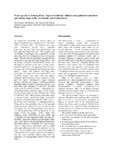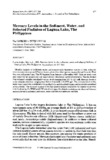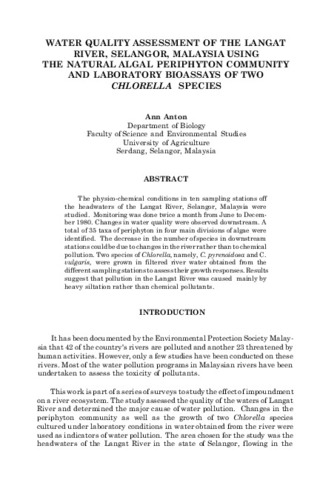Effect of detention time on aerobic waste stabilization pond performance in Southeast Asia
- Global styles
- MLA
- Vancouver
- Elsevier - Harvard
- APA
- Help

閲覧/開く
日付
1994Page views
1,488ASFA keyword
AGROVOC keyword
Metadata
アイテムの詳細レコードを表示するCited times in Scopus
Share
抄録
The rising level of pollution in rivers, lakes and other bodies of water has created problems of significant magnitude in Southeast Asia. Apart from the aesthetic desirability of clean rivers are the pressing dangers to health and detrimental effects on aquatic life. Pollution of these sources must be controlled so as not to interfere with the waters' legitimate uses.
Waste stabilization ponds are well-accepted as an effective and economical means of waste disposal. A "stabilization pond" is an artificially created body of water intended to retain sewage or organic wastes until biological processes have rendered the wastes stable. The stabilization process consists of bacteria and algae interaction. Bacteria oxidize the wastes and produce sludge, carbon dioxide and ammonia. The nutrients produced from bacterial oxidation, along with light energy, supply the requirements for algal photosynthesis. Algae produce oxygen needed to sustain the treatment process. Optimum detention time refers to the average length of time required for waste to become stabilized within a pond.
Properly designed and operated, a stabilization pond can provide treatment comparable to a more costly waste treatment plant. However, the design criteria for a particular climate may not be applicable to other climates. This study was conducted to establish suitable detention times for aerobic stabilization ponds in Southeast Asia.
Suggested Citation
Millamena, O. M. (1994). Effect of detention time on aerobic waste stabilization pond performance in Southeast Asia. Bulletin of Environmental Contamination and Toxicology , 52(6), 856-863. https://doi.org/10.1007/BF00200694
Type
ArticleISSN
0007-4861Collections
- Journal Articles [1229]
Related items
Showing items related by title, author, creator and subject.
-
Water quality in Imbang river, Negros Occidental: effluents and pollutant loads from agriculture, sugar mills, households, and shrimp farms
Gonzales, Guadiosa A.; Gonzales, Hernane J.; Sanares, Roman C.; Taberna, Evelyn T. (Bureau of Agricultural Research, Department of Agriculture, 2007)An ecological assessment of Imbang River in Negros Occidental was undertaken from December 1992 to February 1995. The effluents from sugar mills, households, shrimp farms, sugarcane plantations and rice fields were ... -
Mercury levels in the sediment, water, and selected finfishes of Laguna Lake, the Philippines
Cuvin-Aralar, Maria Lourdes A. (Elsevier, 1990)Monthly samples of sediment, water and commercially important species of fish, primarily Oreochromis niloticus and Chanos chanos , plus a few other species, were collected from the West Bay area of Laguna Lake, The Philippines ... -
Water quality assessment of the Langat River, Selangor, Malaysia using the natural algal periphyton community and laboratory bioassays of two Chlorella species
Anton, Ann (Aquaculture Department, Southeast Asian Fisheries Development Center, 1990)The physico-chemical conditions in 10 sampling stations off the headwaters of the Langat River, Selangor, Malaysia were studied. Monitoring was done twice a month from June to December 1980. Changes in water quality were ...




